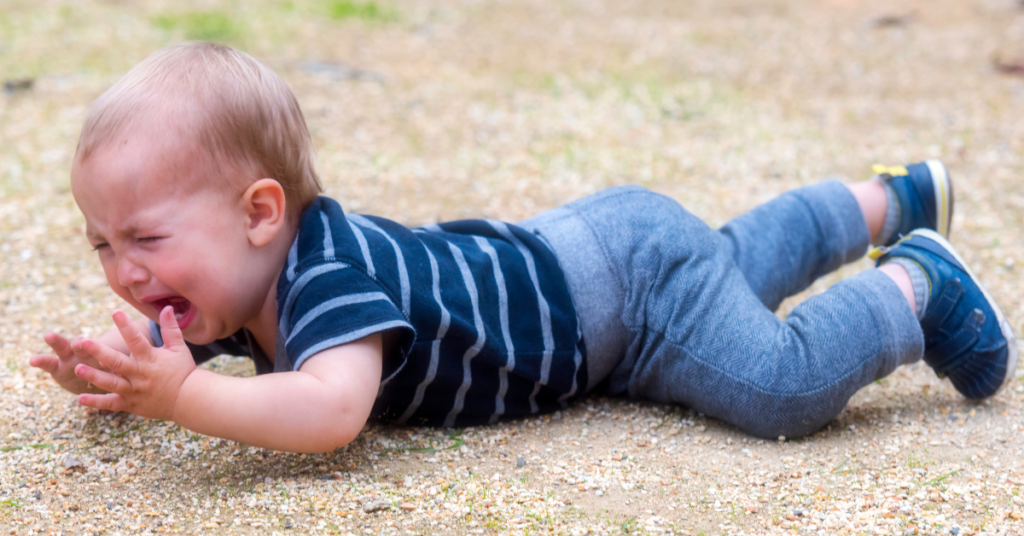Social and emotional learning is a big topic in the homeschooling realm, but when I first heard the term, I was baffled. What was social and emotional learning and why was it such a hot topic? I literally had to look it up several times before I truly understood the concept.
I think my understanding of social and emotional learning is likely different than most. If I had to describe it in one sentence, I’d say that social and emotional learning is what we learned naturally growing up before screens overwhelmed life. True, those things don’t encompass all of the facets of social and emotional learning, but they did make up a big chunk of it.
Although social and emotional learning is usually spoken about as a goal for school-aged children, I think it’s something worth striving for at all ages. Basically, anytime we are working on skills to succeed in school, work, or life, it is part of the social and emotional learning experience. There’s the social aspect (social awareness and relationship skills) and the emotional aspect (self-awareness and self-management) along with some decision-making thrown in for good measure.
Self-Awareness
Before you can really address any concerns you need to be aware of the situation, so social awareness comes first. Do you remember when your child was little and they got upset over everything? My daughter used to say we hurt her feelings all the time. She wants to wear shorts but it’s cold and I tell her she has to wear long pants? I hurt her feelings. She wants to have a cookie when she hasn’t finished her dinner so I tell her she needs to eat more before she can have a cookie? I hurt her feelings. Her articulation challenges and my hearing issues cause me to ask her to repeat herself a few times (and throw in a screaming toddler and the distraction of cooking with the fan on)? I hurt her feelings.
But did I really hurt her feelings? Oftentimes I didn’t, but she didn’t have the language to share how she actually felt. Most of the time she actually felt frustrated or upset. Sometimes she was mad or sad. There are so many words out there to describe feelings, but they need to be taught in order for our kids to recognize and use them.
The other part of social awareness is recognizing how these feelings affect our behavior. When our child is happy, they’re likely silly, confident, and playing without worries. When our child is upset, frustrated, or angry, they’re likely going to cry and possibly have a tantrum or lash out with hitting or kicking. And when our child is sad, they’re likely going to cry and withdraw, and may also have a tantrum or lash out. Sometimes the only way to know the difference is to pay attention to what has led to the response.

Self-Management
Now that you’re recognizing your children’s emotions and how they affect their behaviors (and are helping them to recognize them too!), you can start to teach them about self-management. Just because they always have a tantrum when they get upset doesn’t mean that will always continue to be the case. I mean, do you still have tantrums? We all change and grow as we get older, but it’s possible to help our children intentionally make these changes and take control.
Anger management classes might not be the best example, but I think they’re appropriate in this situation. The idea of these classes is to teach self-management. Not only are attendees learning to recognize their thoughts, feelings, and responses, they’re being taught to recognize that they have more self-control than they think they do. When a situation comes up that makes them angry, they have the ability to recognize their thoughts and try to take a breath and change them. An example: Johnny is happily playing with a toy when Suzie comes over, grabs it, and runs away. Johnny says “hey, that’s mine, I was playing with it!” and runs after Suzie, pushing her down and grabbing the toy.
As an observer, who is right and who is wrong? Suzie stole from Johnny and Johnny pushed Suzie, so technically they’re both in the wrong… but maybe we didn’t see that Johnny was actually playing with Suzie’s toy and that Johnny tripped over his shoelaces which caused him to knock into Suzie accidentally. Or maybe Johnny had put the toy down and had started playing with another toy, so Suzie thought he was done when she took it to put it away, and he shoved her on purpose.
Just because we think we know what’s going on doesn’t mean that we always have the whole picture. It’s worth taking the time to recognize our automatic thoughts and judge them for accuracy. Our thoughts can lead to emotions and behaviors so changing them will change everything no matter how old we are.
Social Awareness
The example of Johnny and Suzie also shows social awareness. It’s easy to make judgments when we experience things, but social awareness is the ability to put yourself in someone else’s shoes. Instead of judging Johnny and Suzie, you take the time to see things from their perspectives. That’s when you realize that things aren’t necessarily as they appear at first glance and can look towards motivation. This can be a hard skill to master and is probably something you can work on throughout your life.
Based on the depth of this concept, kids may need to be a little bit older to really understand it, but there are ways to start early. Whether you read stories to your kids that include feelings and emotions, your kids read stories to themselves (like the Dear America series of books, and their spin-off Dear Canada series, which are written as diary entries), or you provide opportunities for them to role play as characters or write their own stories, you can start helping them start to think from other perspectives.
Relationship Skills
This is likely the skill that causes people to judge us as homeschool parents. How can we teach relationship skills if our kids aren’t at school with the forced proximity relationships that it entails? In my opinion, relationships start at home. A friend recently shared that her teenage son opens the door for her and carries her stuff “like a gentleman.” He also willingly comes and talks to her about how he’s feeling, even if it’ll hurt her, because their trust and bond is that great. I don’t know about you, but that’s not what I learned in school. It’s better.
What are the things you think of when you think of a healthy relationship? Take a second, think about it… I’ll wait…
My list includes communication, trust, respect, acceptance, and more. These are all things that you can model to and for your children. When you accept their feelings and reflect it back to them, they will feel heard and understood. When you explain what you think they’re feeling and give them the language to share it, that will help them to communicate. Each relationship skill can be fostered at home, but it wouldn’t hurt to provide opportunities for your kids to practice these skills outside of the home too. Whether they join classes for their hobbies, a co-op, or maybe just regular homeschool meetups or get togethers with family and friends, they’ll be able to build additional healthy relationships.

Decision-Making
Just like everything else on this list, decision-making is another big topic. When it comes to social and emotional learning, the focus is on responsible decision-making where you think about how your decisions will affect others. Have you ever watched a movie or television show where the lead is offered a promotion that includes a move and they accept it without hesitating or consulting their spouse/thinking about how it’ll affect their family? I don’t know about you, but that ticks me off!
In all likelihood the spouse will be supportive and everything will work out, but what if they didn’t consider some big things in their haste? Maybe they live near aging family members and a move would mean they don’t get to spend their final days with them. Or maybe they live WITH those family members who can’t move that far so have to be placed in a nursing facility. Their kids could be involved in community activities and the rushed move could force them to leave mid-season from a sports team or miss their dance recital. The spouse could have their own reasons why a move shouldn’t happen or should be delayed as well.
The same idea applies to most decisions made at any age – each decision usually affects more than one person and it’s important to give that consideration. We can teach our kids this with smaller decisions first and work our way up to the big decisions. “Hey Johnny, I have two strawberries, one for you and one for your sister. Which one do you want and which one should I give to her?” Does it really matter who gets which strawberry? Not really. But does this help teach Johnny that his decision-making affects others? Absolutely!
Social and Emotional Learning in Practice
I hope this has helped you understand social and emotional learning or perhaps given you a new perspective on the concept. It’s super-important for kids, but it’s just as important for adults! I plan to include more posts with ideas on how to incorporate social and emotional learning into your homeschool, like my recent post on fireflies, so stay tuned for more!
Do you have any favorite ways to teach your kids this concept? I’d love to hear them! Post a comment below, or subscribe to my newsletter and send me an email!
Thank you for joining us In Our Homeschool!

Disclosure: As an Amazon Associate I earn from qualifying purchases. This post may include affiliate links which means I may earn commissions for purchases made while using my link.





This Post Has One Comment
I love this blog post! Such a good explanation of what social and emotional learning is. You’ve answered so many ‘unanswered’ and mystifying questions for me. Thanks so much for this!